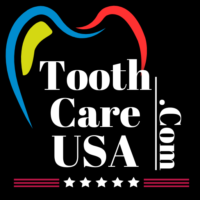Tooth whitening, a popular cosmetic dental treatment worldwide, claims to provide brighter smiles, increased confidence, and rapid results. But this is the catch: Not everyone is safe to whiten, and not everyone should use it.
If you have ever asked yourself, “Will whitening damage my teeth?” or “Is it safe if I have fillings or sensitive gums?” then you are not alone.
That’s why we built the Tooth Whitening Risk Checker, a free, easy-to-use tool that helps you evaluate your dental condition and decide whether whitening is right for you — before you waste money or worsen your smile.
🦷 Tooth Whitening Risk Calculator
In this article, we explain:
- What tooth whitening is
- The risks most people ignore
- Who should use the Whitening Risk Checker
- How the tool works
- What do your results mean
- Safe whitening options for every risk level
Let’s help you get the right smile-safely and smartly.
What is Tooth Whitening?
Tooth whitening refers to cosmetic treatments that lighten the color of your natural teeth. It can be done in a dental office or at home using products like:
- Whitening strips
- Whitening gels with trays
- LED light kits
- Whitening toothpaste
- Natural remedies (e.g., baking soda)
Most modern whitening treatments use hydrogen peroxide or carbamide peroxide to bleach stains from the enamel surface. While these treatments are generally safe when performed correctly, they are not one-size-fits-all.
Also Read>>>How Often Can You Use Whitening Strips? A Complete Guide
Common Risks of Tooth Whitening
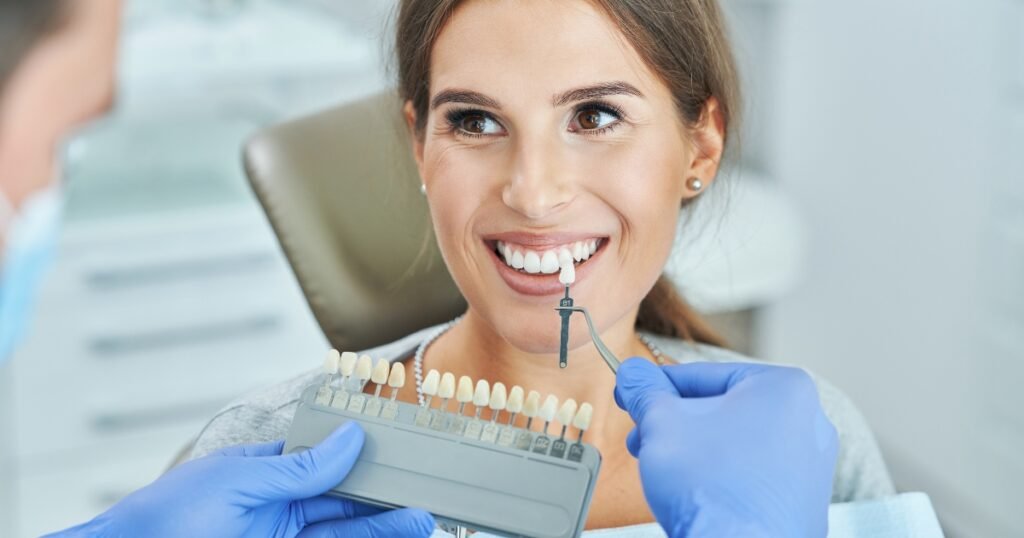
Whitening appears simple enough, but it comes with hidden risks, especially for those
Here are the top concerns that often go overlooked:
1. Tooth Sensitivity
Whitening agents can strip moisture and irritate the nerves inside your teeth. So, if your teeth are already sensitive to cold or heat, then whitening may make it worse.
2. Gum Irritation
Aggressive gels or strips can burn your gums, especially when either your technique is sloppy or you have gum disease.
3. Enamel Damage
Over-application of whitening means weak teeth for those with thin enamel or microscopic cracks.
4. Ineffective on Dental Work
It will have no effect on crowns, veneers, or bonding-and may even make them more conspicuous.
5. Uneven Results
Patchy or blotchy results will mar an otherwise lovely smile when present dental work or deep internal stains interfere.
These impending dangers made an intelligent pre-whitening assessment tool to determine your dental readiness.
What is the Tooth Whitening Risk Checker?
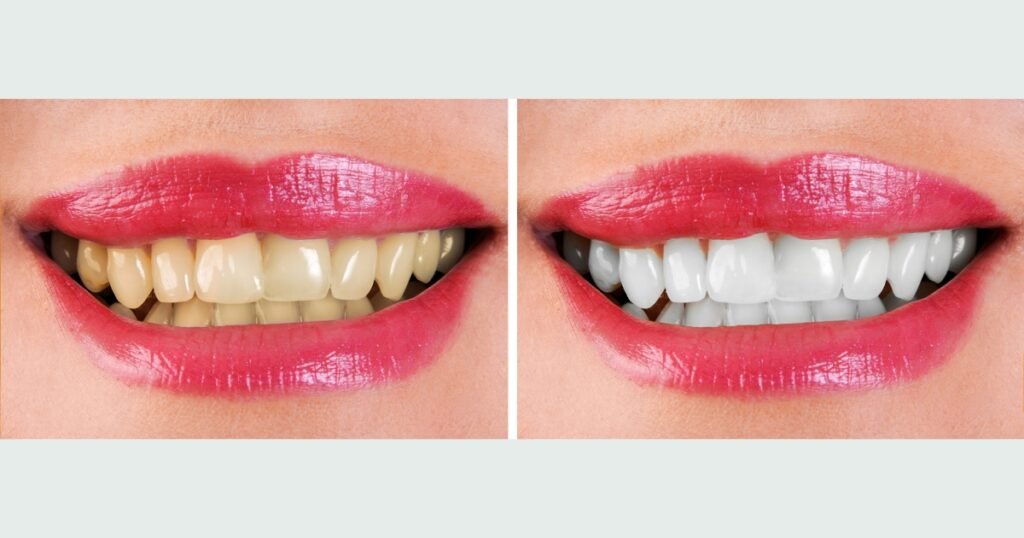
The Tooth Whitening Risk Checker is a Free online and web-based calculator for tooth whitening in understanding personal risk levels.
It lists some questions so that it can look into:
- Your age & oral health history
- Sensitivity level
- Existing dental work
- Condition of the gums
- Staining level
- Timeframe for whitening
- Any known dental conditions
It then provides a personalized result, classifying your whitening risk as:
- ✅Low Risk (SAFE to proceed with standard products)
- ⚠️Moderate Risk (use only gentle options)
- ❌High Risk (good idea to seek dental advice first)
In each case, recommended means are provided.
Who Should Use This Tool?
This tool is perfect for:
- People considering at-home whitening kits;
- Individuals with sensitive teeth or gum issues;
- Those with crowns or fillings, or veneers;
- Teens and older adults are curious about whitening.
- Anyone uncertain whether whitening is safe for them.
In short, got whitening on your mind but not discussed it with a dentist? This tool should start the ball rolling.
How to Use the Tool (Step-by-Step)

The Tooth-whitening Risk Checker takes not over 2 minutes to use. Here’s the process:
Step 1: Enter Your Age
Some age groups (like teens and seniors) are prone to more sensitivity and complications.
Step 2: Choose Your Sensitivity Level
Are they crowns, fillings, veneers, or braces? All influence whitening effectiveness.
Step 3: Indicate Dental Work
Inflamed or bleeding gums indicate further treatment before whitening.
Step 4: Report Gum Health
Inflamed or bleeding gums indicate further treatment before whitening.
Step 5: Use the Staining Slider
From 0 (white) to 10 (very dark), rate your current tooth color: This can result in a stronger product being needed.
Step 6: Select Whitening Urgency
Need to hurry? That’s generally when people choose harsher routes, which can often cause problems.
Step 7: Disclose Any Dental Conditions
Enter anything else (e.g., “I have enamel loss” or “I grind my teeth”).
👉 Click the Button: “Check My Whitening Risk”
The result will appear instantly with clear explanations, risk level, and safe methods.
What Your Results Mean
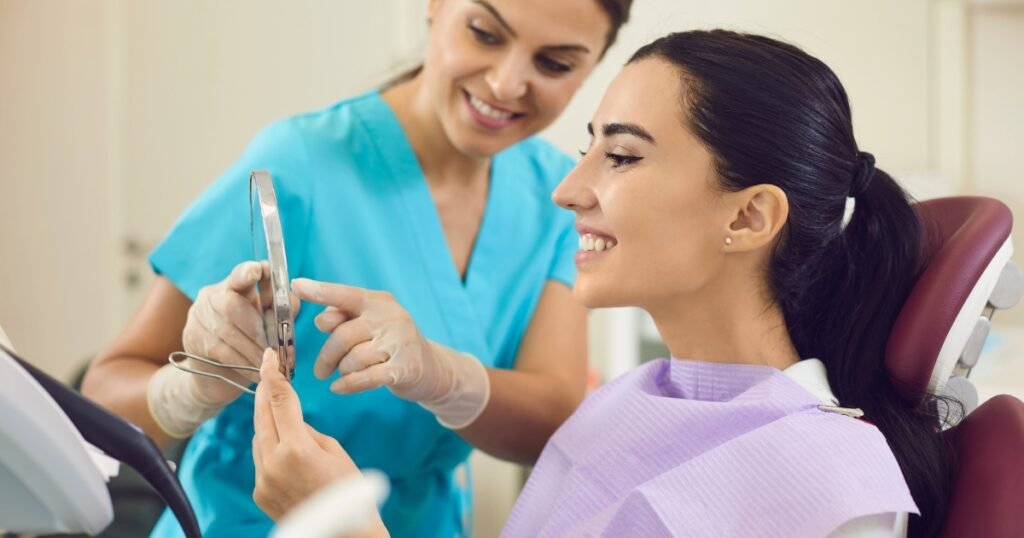
🟢 Low Risk
You’re a great candidate for whitening! You can safely try strips, toothpaste, or even LED kits. Just follow instructions and avoid overuse.
🟡 Moderate Risk
You may proceed — but only with caution. Stick to low-sensitivity formulas, don’t whiten too often, and consider natural alternatives like coconut oil pulling or baking soda.
🔴 High Risk
Whitening may make your condition worse. Issues like gum disease, thin enamel, or lots of dental work mean you need professional evaluation first. Don’t DIY it.
Why This Tool Matters
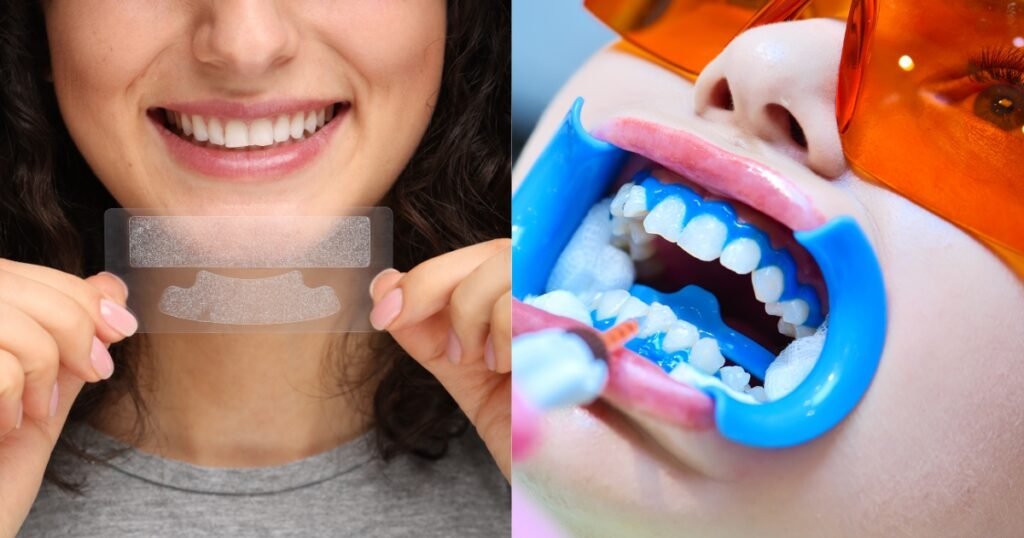
Tooth whitening is marketed as “safe for everyone,” — but that’s not always true. Our tool helps you avoid:
- Painful mistakes
- Wasting money on ineffective treatments
- Long-term damage to your teeth
Even better, it educates you on what method suits your mouth, not just your budget.
Safe Whitening Methods Based on Your Risk
Here’s a quick guide based on your result:
| Risk Level | Recommended Options | Avoid |
|---|---|---|
| Low | Strips, LED kits, pro trays | Over-whitening |
| Medium | Low-sensitivity gels, natural remedies | Strong peroxide kits |
| High | Dental cleanings, fluoride treatments | DIY bleaching |
Best Practices After Whitening
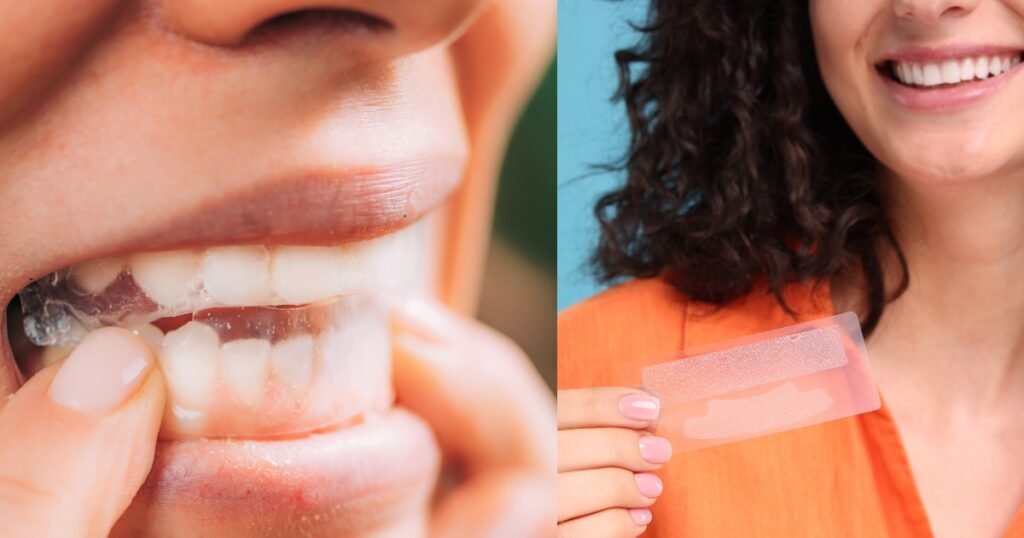
No matter your risk level, follow these tips after any whitening treatment:
- Avoid coffee, red wine, and smoking for 48 hours
- Use a soft toothbrush and gentle toothpaste
- Rinse with water after meals
- Don’t whiten more than once every 6–12 months unless advised by your dentist
Final Thoughts: A Brighter Smile Starts with Smart Decisions
Tooth whitening can be a confidence booster when done safely.
The Tooth Whitening Risk Checker isn’t just a calculator. It’s your personal safety assistant in a world of overhyped smile solutions.
Before you jump into any treatment, take 2 minutes and use the tool. Your teeth (and your wallet) will thank you later.
- It’s fast
- It’s free
- It’s based on real dental risk factors
Try the Tooth Whitening Risk Checker now and find out where you stand — and how you can whiten the right way.
Web Story On Tooth Whitening
Faq on Tooth Whitening Risk Checker
Is tooth whitening safe for everyone?
No, it isn’t. For example, people with sensitive teeth or gum diseases, people with eroded enamel, and even those with dental restorations like crowns or veneers are at risk of some common whitening substances in the market that claim to be safe. That’s why you’ll need to check our Risk Checker before anything goes on with whitening.
Will this tool tell me exactly which product to use?
It hasn’t provided a brand, but by interpreting your answers, it will give you individual recommendations, such as strips, LED kits, or natural alternatives, which fit your level of risk and oral status.
Can I use this tool if I’ve already started whitening?
Of course. If you’re having some discomfort or want to know whether or not to keep going, use this tool to reassess your risk. You might just find some other options that are safer or more effective, given your current symptoms.
How accurate is the Tooth Whitening Risk Checker?
Even though this is not a substitute for a dentist’s clinical examination, the tool has established itself as a common clinical parameter that dentists use to evaluate a patient’s readiness for tooth whitening. It gives a quick educational view of risk to make better choices.
What should I do if I get a high-risk result?
It indicates disallowing you from doing whitening by yourself. You can have your dental visit first. The professional will sort out any underlying issues before offering you safer, customized options for whitening.

Dr. Niraj Ghanghoriya is a passionate dental surgeon with over 12 years of experience in clinical dentistry. He completed his BDS from the prestigious Sri Aurobindo Institute of Dentistry in 2012 and specializes in painless root canals, smile makeovers, and preventive oral care. Known for his patient-first approach and clear communication, Dr. Ghanghoriya aims to make dental knowledge accessible to everyone. When he’s not in the clinic, he enjoys writing informative dental blogs to help people take better care of their oral health.
